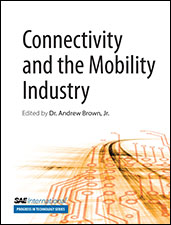Journal Article
Real-time Sensing of Particulate Matter in a Vehicle Exhaust System
2017-03-28
2017-01-1639
Onboard diagnostic regulations require performance monitoring of diesel particulate filters used in vehicle aftertreatment systems. Delphi has developed a particulate matter (PM) sensor to perform this function. The objective of this sensor is to monitor the soot (PM) concentration in the exhaust downstream of the diesel particulate filter which provides a means to calculate filter efficiency. The particulate matter sensor monitors the deposition of soot on its internal sensing element by measuring the resistance of the deposit. Correlations are established between the soot resistance and soot mass deposited on the sensing element. Currently, the sensor provides the time interval between sensor regeneration cycles, which, with the knowledge of the exhaust gas flow parameters, is correlated to the average soot concentration.




